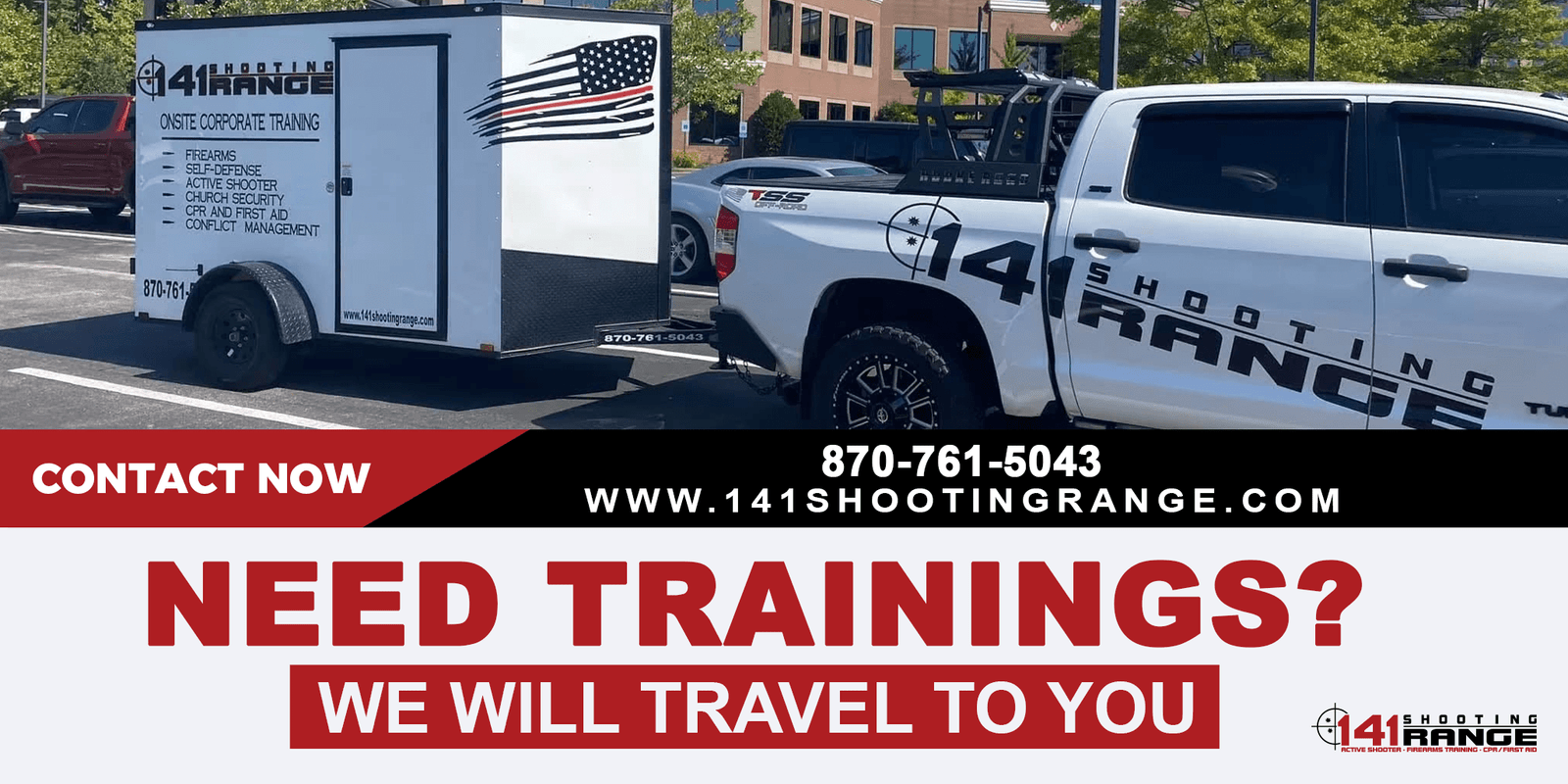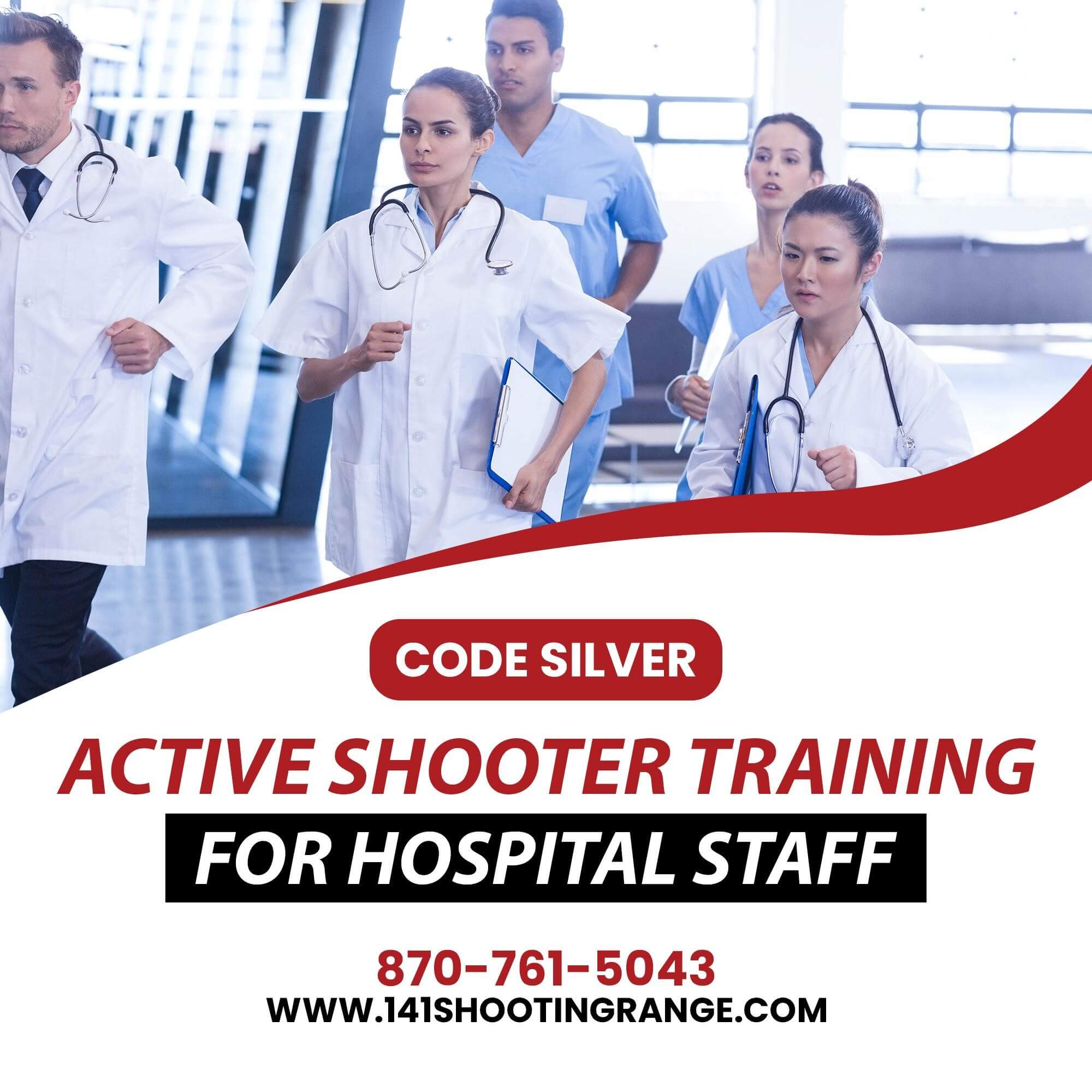Active Shooter Training In Arkansas
An individual who actively engages in the intentional or attempted killing of another person in a populated location. Individuals and organizations can be better prepared to respond effectively to active shooter situations by undergoing training, which can occur anywhere. Active shooter training is necessary to increase the awareness and preparedness of the community, develop effective mechanisms to deal with active shooters, and minimize the risks of harm and property damage.
What Is Active Shooter Training?
Active shooter training aims to prepare individuals and organizations to deal with an active shooter situation as quickly and effectively as possible. An active shooter can come at any time and place, and their major intent is to shoot whomever they can, and this makes them dangerous.
Our active shooter training program provides you with all you need to be equipped in cases of active shooting. We teach you the seven-time clocks of an active shooter event and the responses for each one.
You can complete your active shooter certification at your preferred location.
Get In touch with us today, an outstanding Arkansas active shooter training.
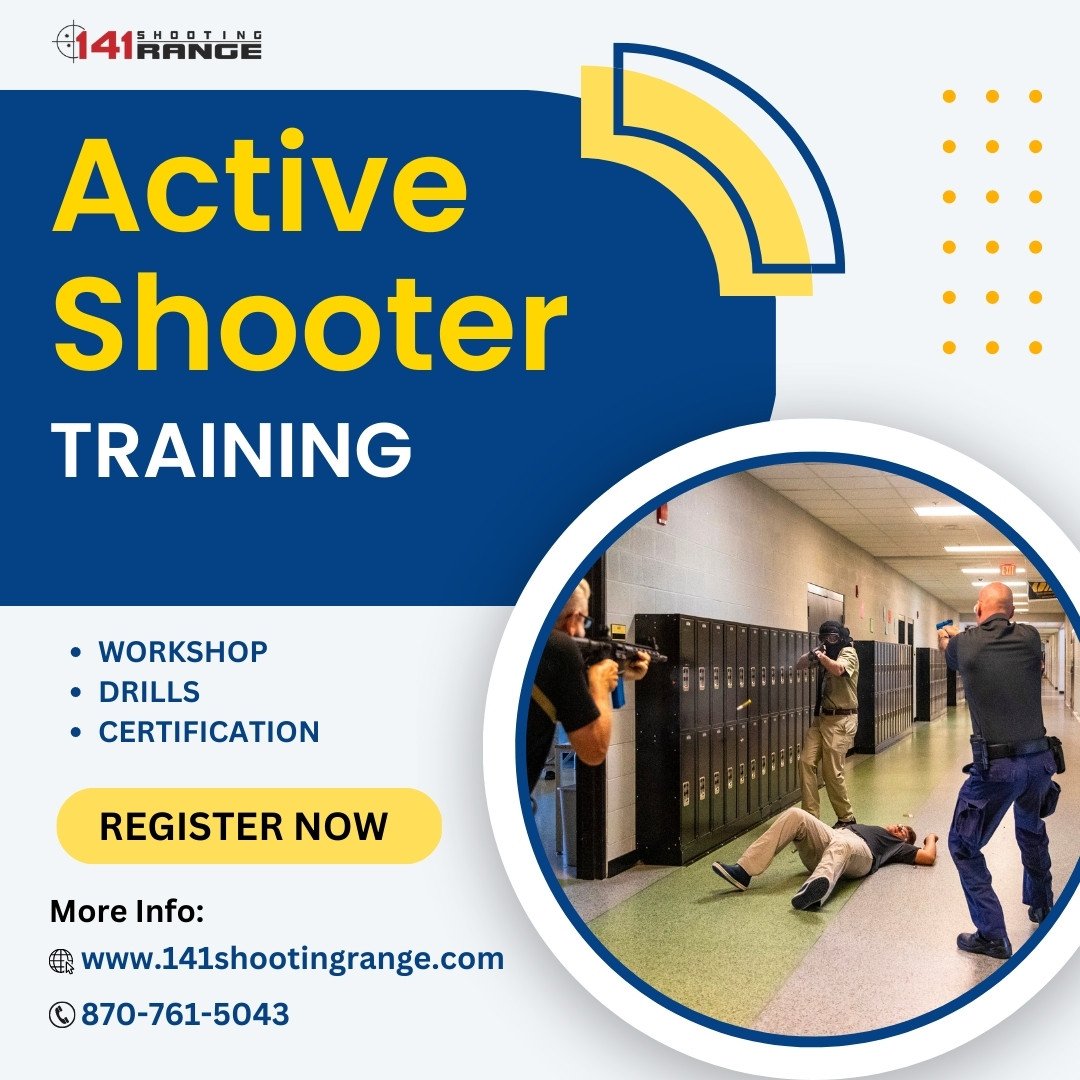
Our Active Shooter Training
Active Shooter Training For Business
Businesses prioritize active shooter training to protect employees and reduce the risk of workplace violence.
Active Shooter Training For Churches
Active shooter training in churches strengthens security, ensuring worshippers’ safety during challenging moments.
Active Shooter Training For Daycares
Preparing daycares for potential emergencies with active shooter training to safeguard young children and caregivers.
Active Shooter Training For Hospital Staff
Hospital staff receive active shooter training to enhance preparedness, reduce risks, and ensure the safety of patients and personnel.
Active Shooter training for your factory, business, or daycare in Arkansas, Missouri, and Tennessee
COURSE DESCRIPTION
1) Introduction & Goals:
Importance of remaining alert, being decisive, and having a pre-planned practised response.
2) Introduction & Goals:
How to maintain a vigilant awareness of student behavior?
3) Safety Plan:
How develop a school and classroom plan for dealing with an active shooter? How to conduct school safety walks?
4) Prepare:
How to develop your leadership skills? the basics of tactical emergency First Aid.
5) Escape:
Your first and best option is how to identify the best escape routes & managing movement.
6) Barricade:
Your second option is how to prevent the shooter from entering your location.
7) Defend:
Your third option is how to use weapons of opportunity, disarm the shooter or directly engage a shooter.
8) Stages:
What to do at each of the seven stages on an active shooter incident; how to work with local law enforcement
Training Exercises
Tabletop Exercises:
An organization might utilize tabletop exercises to test the effectiveness of its emergency response plan and identify areas that can be improved through discussion-based exercises.
Drills And Simulations:
To practice responding to an active shooter situation, drills and simulations can be used with hands-on exercises.
Evaluation And Feedback:
As soon as participants have completed a training exercise, organizations should evaluate their performance and give them feedback so they can make improvements in the future.
Benefits Of An Active Shooter Training
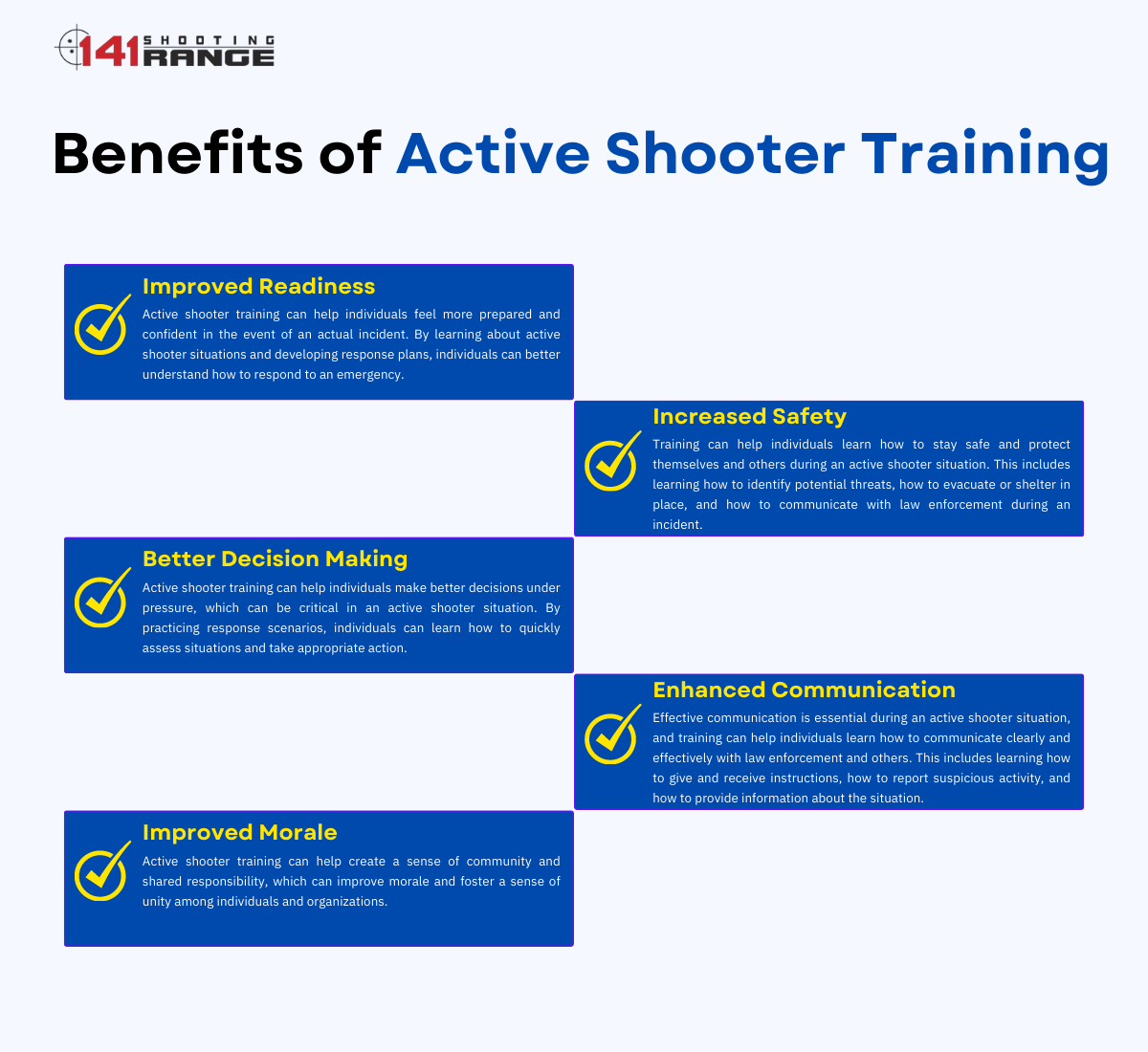
Active Shooter Statistics
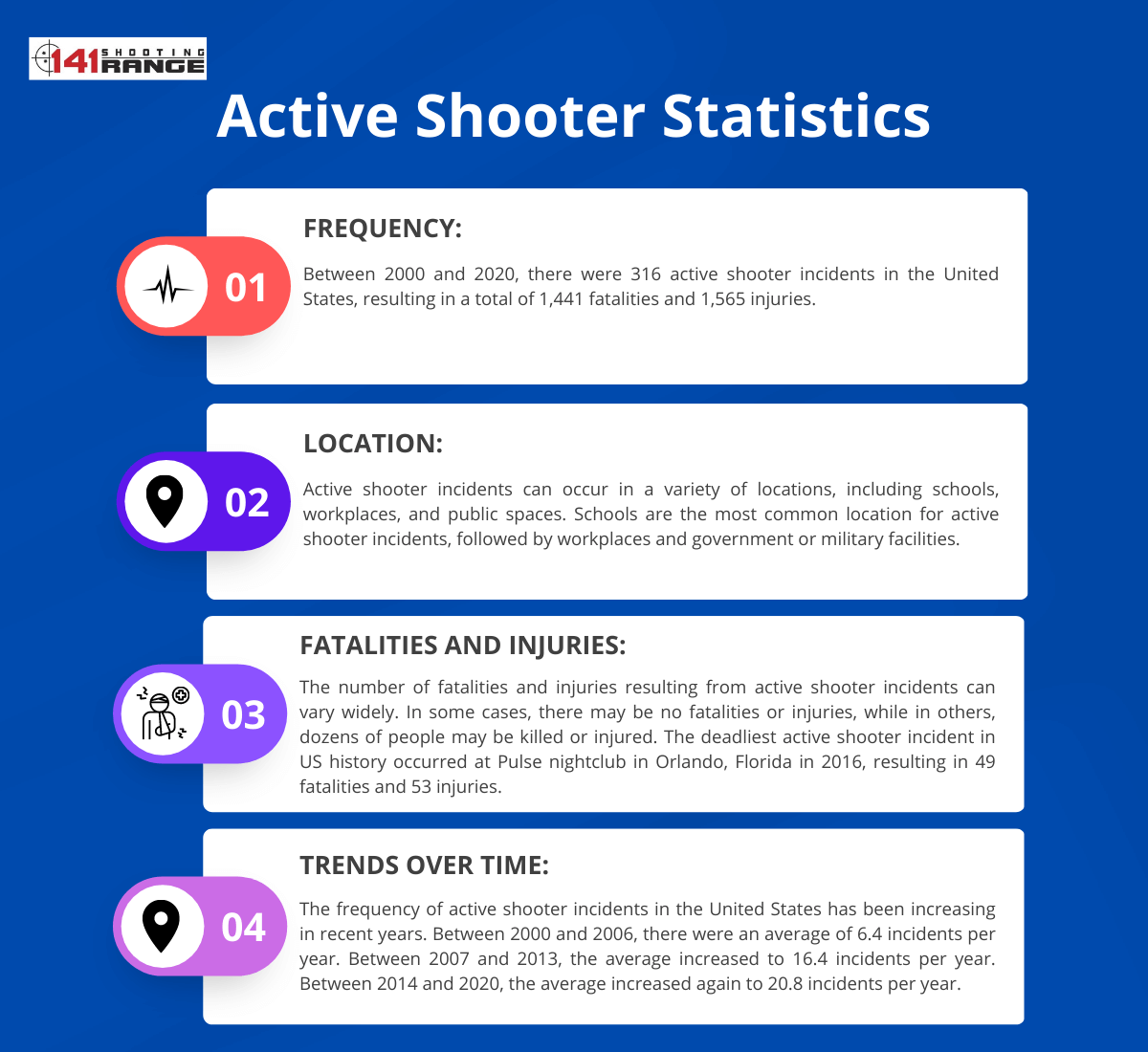
What Kind Of Training Do We Offer And What Do You Need?
Certification:
We recommend doing certification to key members of staff who are most prone to be put in a position to protect others, front-line security type personnel, teachers, front office, and security, etc. Also, people who have been at your facility for some time to justify putting money into them (we understand due to employee turnover, some positions, the training doesn’t make financial sense). Certification is good for 2 years.
Workshops:
These are continuous training classes we use mostly for working on a set of subskills to be better proficient at a certain area such as gun disarms, moving of injured students, immediate aid of injured persons. These are normally done quarterly or yearly as a way to improve staff’s performance.
Education:
Sometimes we are asked to talk about active shooters for groups. These talks are designed to bring awareness of the situation and are sometimes used as an introduction to getting buy-in from company executives, its employees or members. The cheapest option usually works for check-the-box training (which we frown upon as lives depend on us) and can be used for new hires, temporary workers, etc., who may not fit the bill for certification.
Strategy For Responding To An Active Shooter
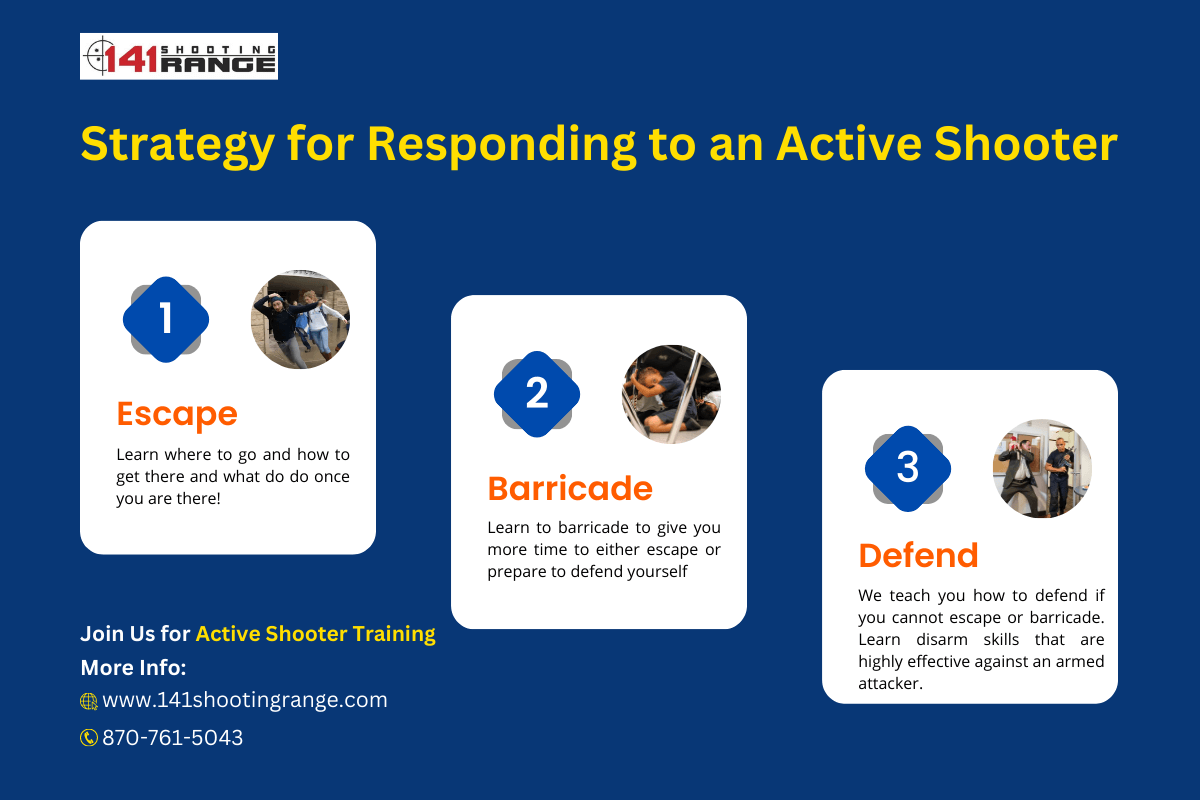
Signs Of Suspicious Behavior
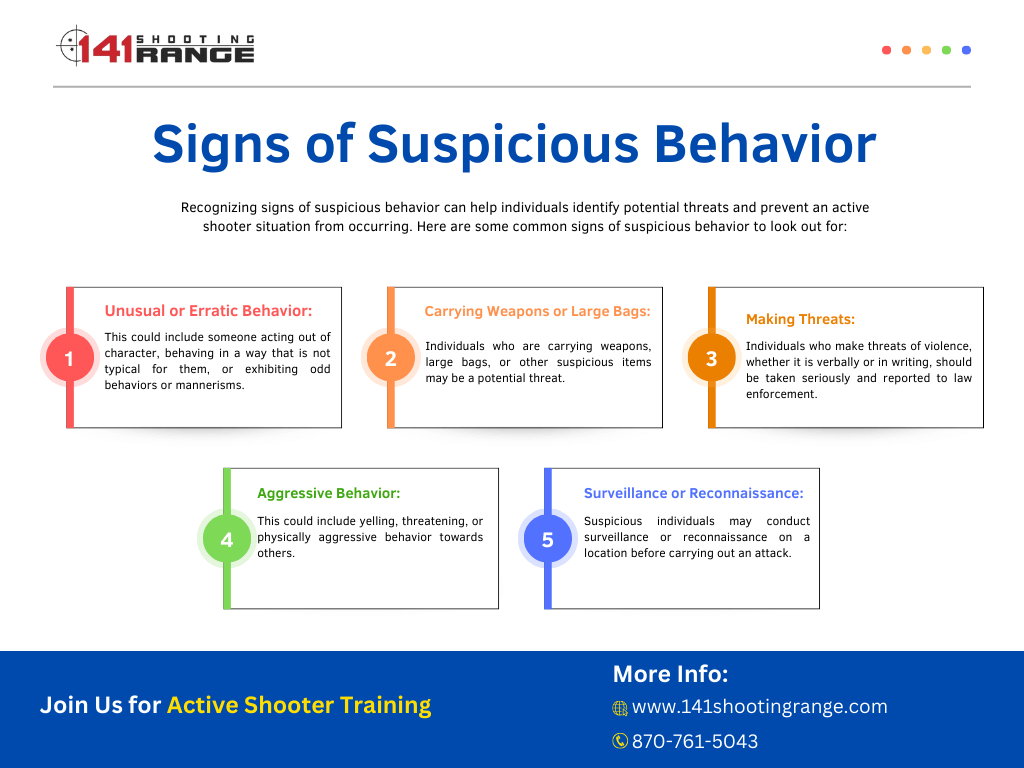
Start Your Active Shooter Training With Northeast Arkansas’ Finest Active Shooter Certified Instructor
Anyone can be a part of our active shooter training program. 141 Shooting Range has all it takes to prepare anyone against any active shooter event. Unfortunately, desperate times call for desperate majors; get your organization ready for any unlikely event that may take place in the future.
If your location is within Arkansas, Missouri, Tennessee, Mississippi, or anywhere in the US, give us a call today!
Shelter In Place Procedures
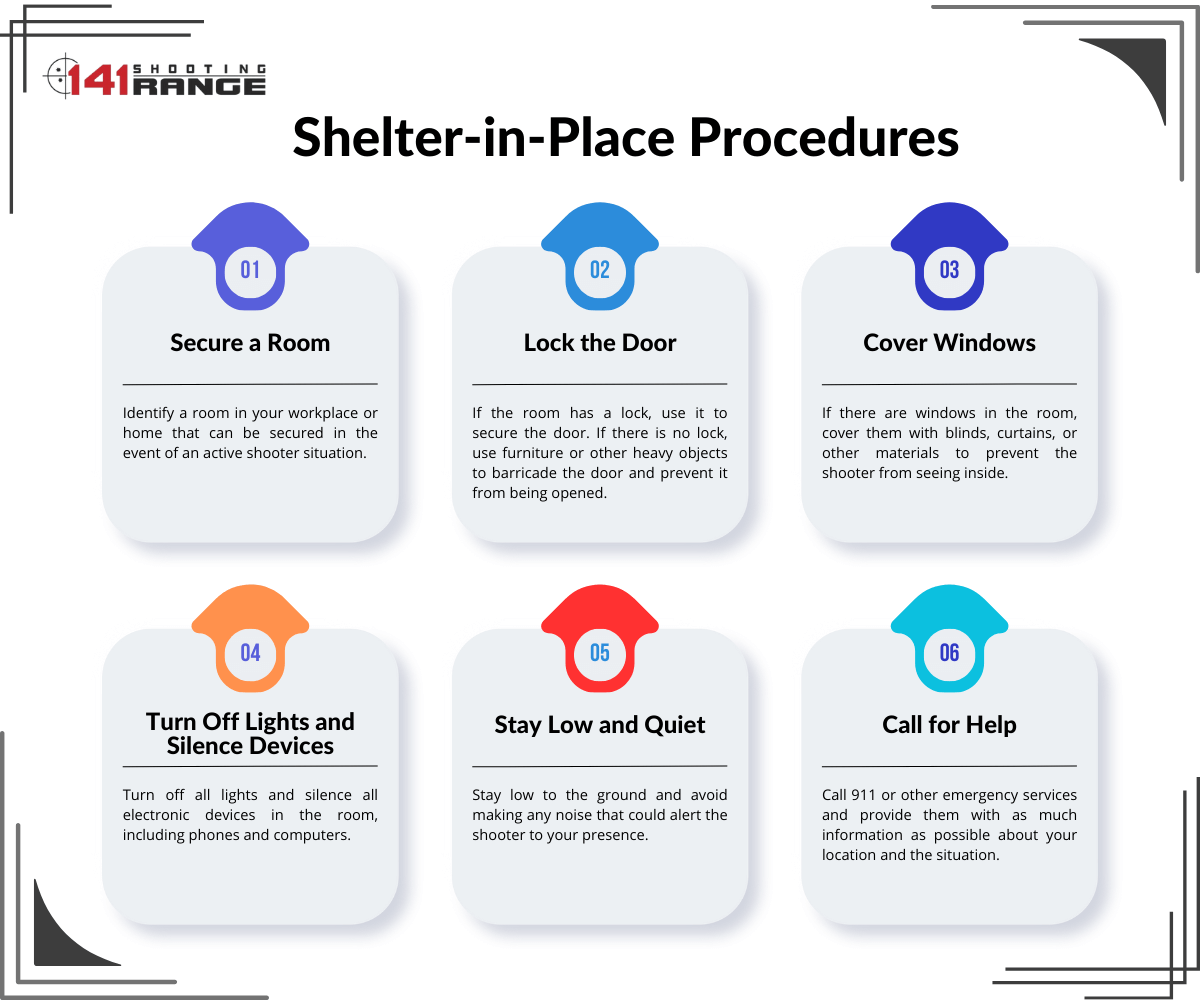
Evacuation Procedures
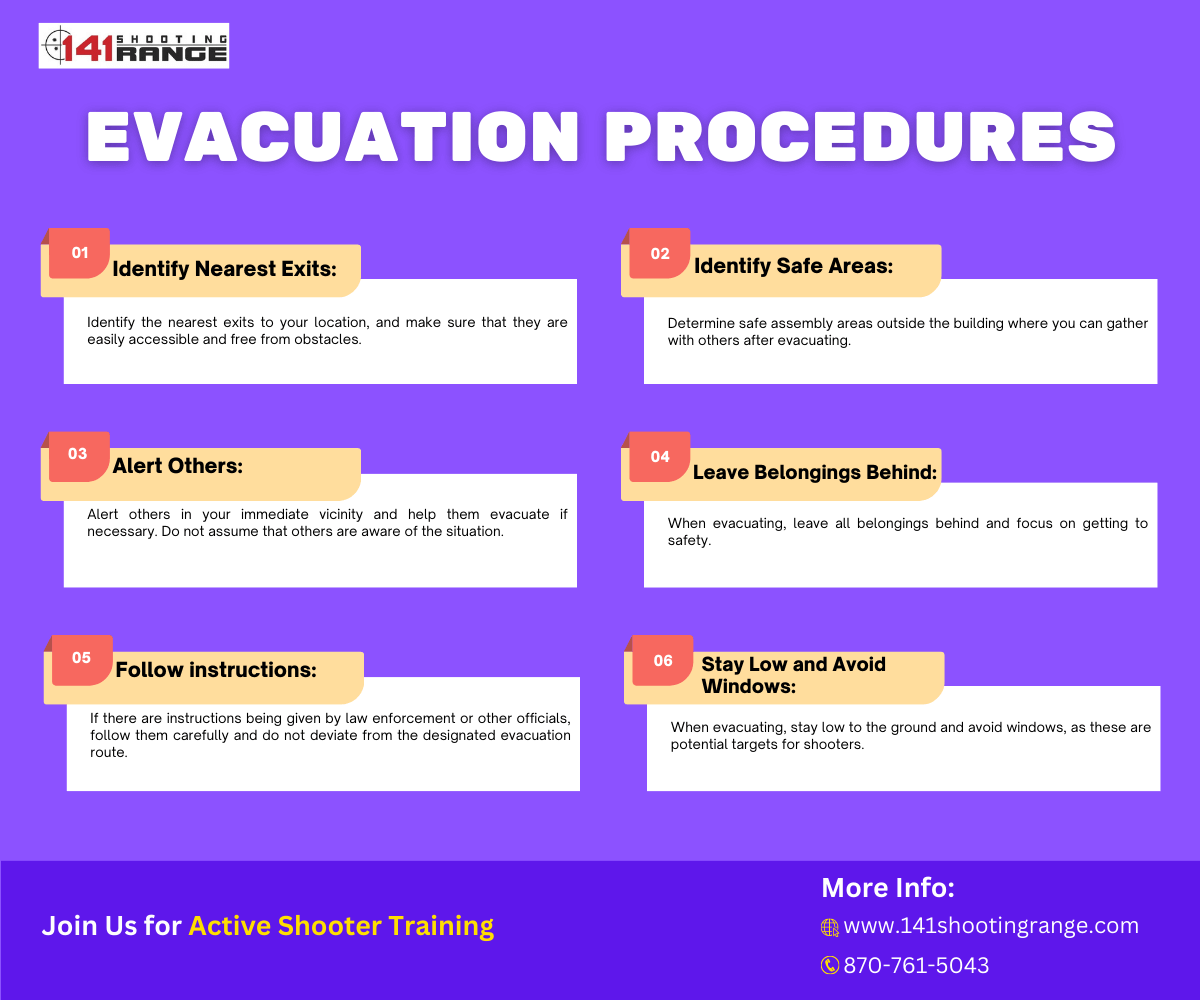
Need A Private One On One Class On Concealed Carry, CPR, BLS, Active Shooter, Self-Defense And Conflict Management?

Frequently Asked Questions:
Employees, students, and public patrons can benefit from active shooter training even if they don’t expect to encounter an active shooter.
Active shooter training aims to increase awareness, prepare for, and develop effective threat responses. And to minimize damage and death to people and property as much as possible.
Active shooters often share more than mental health history, sexual orientation, and gun ownership.
Handguns, rifles, and shotguns are the most common firearms used in active shooter situations.
By developing a plan of action for an emergency response to an active shooter situation, assessing and identifying potential threats. And implementing security measures that can prevent active shooter situations from occurring, organizations can be prepared for such a situation.
Individuals should follow the “Run, Hide, Fight” approach to protect themselves and others. Which includes doing what they can to avoid being attacked.
After an incident, staff members should receive debriefing and emotional support, and an investigation should start. Reviewing and updating the emergency response plan as soon as possible is also important.
Organizations can evaluate active shooter training in several ways, such as through tabletop exercises, drills, and simulations. As well as by providing feedback to participants after the training session.
